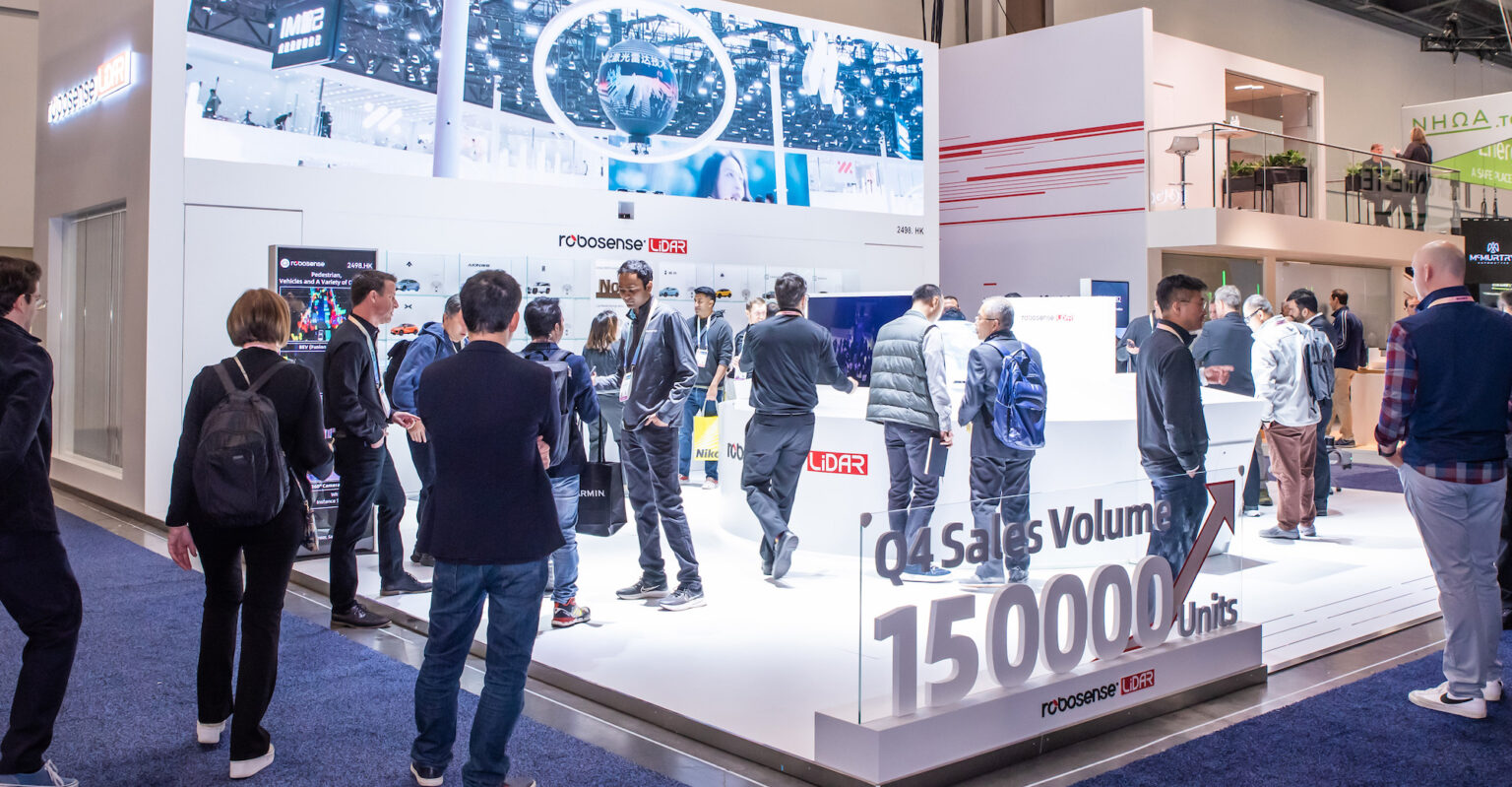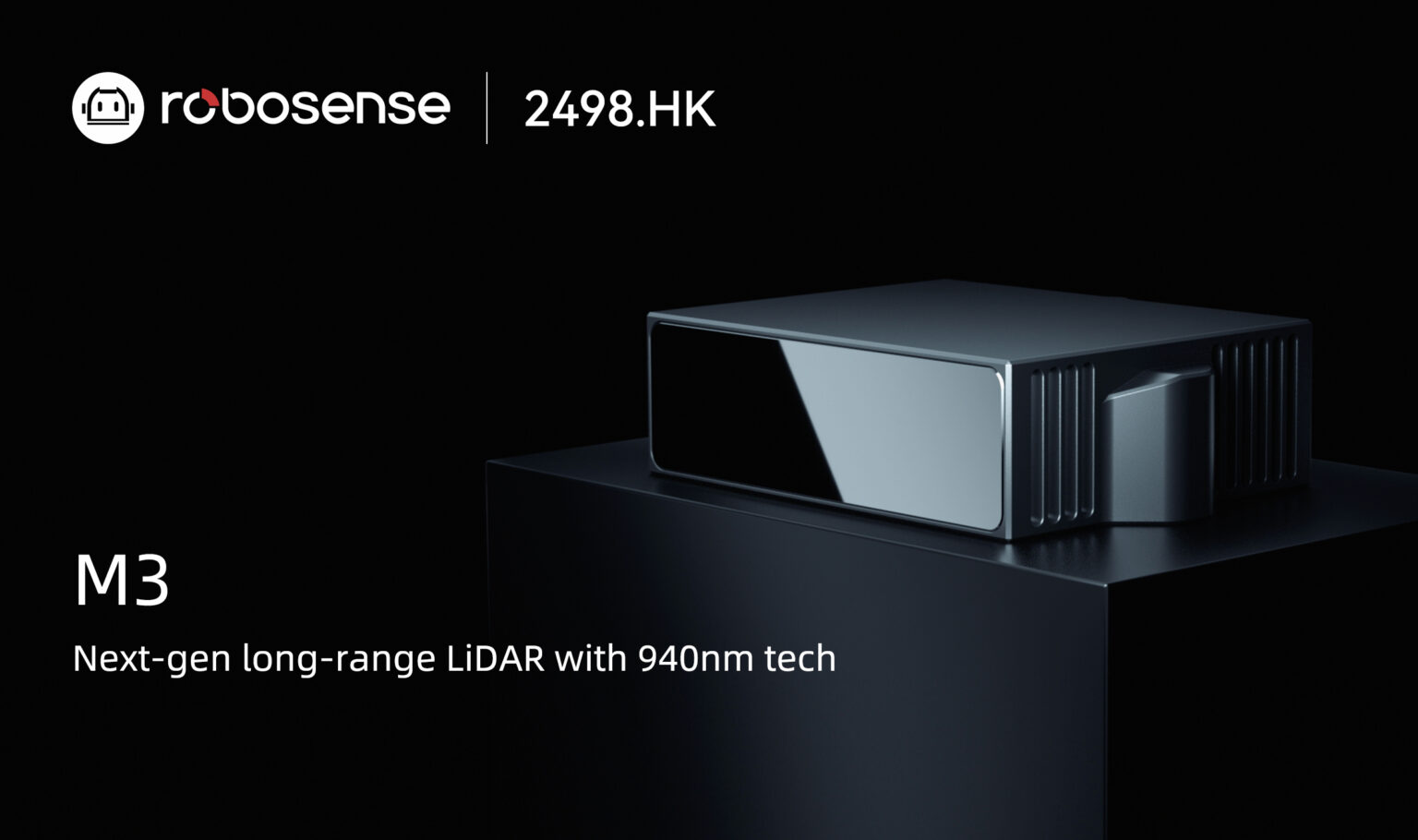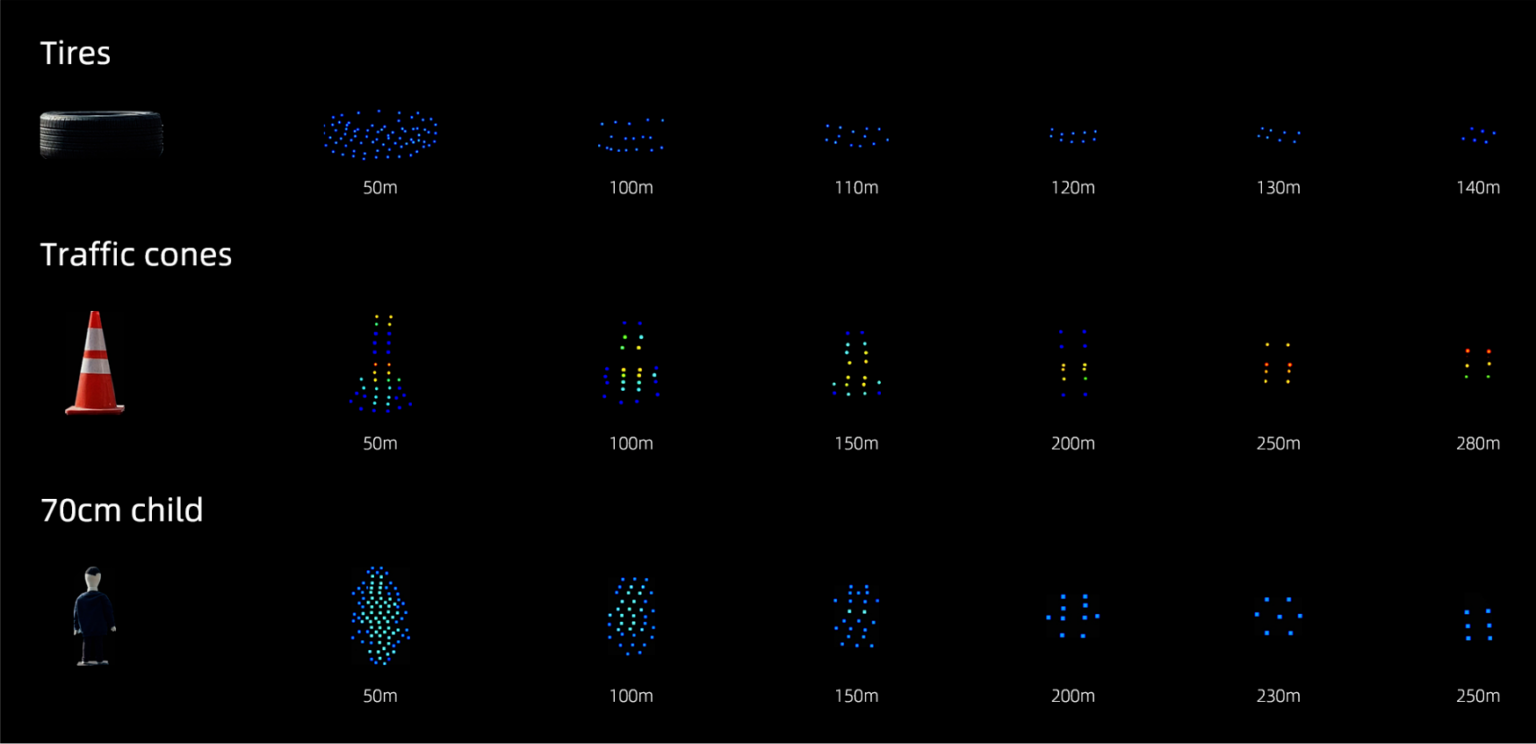
At the ongoing Consumer Electronics Show (CES) 2024 in Las Vegas, smart LiDAR system provider RoboSense unveiled its latest product – M3. Operating on a 940nm wavelenghth, M3 delivers a performance comparable to 1550nm laser, aligning itself with the capabilities of the most advanced LiDAR solutions in the market, such as the Luminar Iris.
LiDAR, or Light Detection and Ranging, is a remote sensing technology that measures distance by illuminating a target with a laser and analyzing reflected light. In the EV industry, particularly in the realm of autonomous driving, LiDAR systems are being utilized as the “eyes of cars”, creating high-resolution real-time 3D maps of the surroundings. By integrating three core technologies – LiDAR hardware, perception software, and chips – RoboSense provides the market with intelligent LiDAR systems capable of understanding complicated road information.
The prevailing view in the industry has been that ultra-long-distance measurements necessitate the use of 1550nm laser. Despite years of development, however, the 1550nm laser technology still grapples with unresolved engineering challenges and high costs, making mass production and delivery a significant hurdle. In contrast, RoboSense’s M3 – operating on a 940nm wavelength – stands as a promising solution.
At CES 2024, RoboSense reveals that the M3 achieves an impressive 300m detection range at 10% reflectivity, and has obtained human eye safety certification (with an ILAC-MRA certification certificate).

The M3’s superior angular resolution, as high as 0.05° x 0.05°, allows it to meticulously scan obstacles, generating high-definition 3D point clouds. This combination of ultra-long-distance measuring ability (300m@10% Reflectivity) and high resolution (0.05°*0.05°) enables the M3 to clearly identify small distant obstacles, aiding Level 3 autonomous vehicles to react in advance. For instance, it can detect a traffic cone at 270m with 6 points, a standing child at 200m with 8 points, and a black tire at 130m with 8 points.
Furthermore, the M3 supports a speed limit increase for L3 autonomous driving up to 120km/h, meeting the needs of a vast majority of global operational requirements. This is a significant improvement over current systems, such as the Mercedes L3 autonomous driving system, which has a speed limit of 60km/h.
At the heart of the M3 system is RoboSense’s 940nm laser emission solution, a technology under development since 2019 and already implemented in the E1 model. This advanced Vcsel dot matrix laser technology outperforms the 1550nm fiber laser in several key aspects.
It offers over 30% reduction in power consumption and a 50% decrease in size, providing a more compact and energy-efficient solution. Consequently, the M3’s low power consumption results in less heat generation, which only requires passive heat dissipation. This is a significant advantage over the 1550nm long-distance product, which necessitates additional active cooling mechanisms. This not only enhances the M3’s performance under high-temperature conditions but also simplifies the integration process for customers, making it less challenging.
On the receiving end, the M3 employs RoboSense’s mature SiPM solution, an approach widely accepted in the industry and is part of a broader trend towards improving the performance and manufacturing process of SiPM. With the upstream supply chain actively pushing for these enhancements, the cost of SiPM has been rapidly decreasing. This opens up greater potential for technical upgrades compared to the custom devices using InGaAs/InP at 1550nm.

The M3 represents the first long-range product in the M platform series from RoboSense. Based on a modular and platform-based design, it serves as a foundation for future product development and ensuring efficient, controllable innovation. While it maintains the point cloud scanning format, data interface, and physical size of its predecessors, the M3 offers enhanced performance at a lower cost. This upgrade strategy allows customers to seamlessly upgrade their autonomous driving models, reducing secondary development costs to near zero and facilitating cost-effective autonomous driving solutions in new vehicle models. This feature, already seen in the upgrade path from the M1 to the M2, also promotes faster model iteration efficiency and maintains a competitive edge in the consumer market.
Founded in 2014, RoboSense is one of the first in China to develop multi-beam LiDAR technology. Over the course of its existence, the company has completed five major iterations of its smart solid-state LiDAR project, including M1, M1 Plus, M2, M3, and E1. Following the launch of its inaugural product – the M1 – in 2020, RoboSense has secured orders from Lucid Motors, Inceptio, as well as leading Chinese EV manufacturers like BYD and Xpeng. On August 18, 2023, for example, Xpeng‘s CEO, He Xiaopeng, informed investors that the G6 Max version, which features two LiDAR units from RoboSense, represented 70% of all orders since the vehicle’s official release, “far exceeding expectations”, said He.
As of December 18, 2023, RoboSense has received more than 62 design wins from 21 OEMS and Tier1 suppliers, and achieved SOP for 24 vehicle models.
On January 5, 2024, RoboSense went public in Hong Kong. As per the voluntary announcement released by the company on January 8, in December 2023, the Group reported sales volumes of approximately 72,200 units for LiDAR products, 71,000 units for LiDAR products used in ADAS applications, and 1,200 units for LiDAR products used in robotics and other applications. In the fourth quarter of 2023, the sales volumes increased to approximately 151,000 units for LiDAR products, 147,500 units for LiDAR products used in ADAS applications, and 3,500 units for LiDAR products used in robotics and other applications. For the entire year of 2023, the Group’s sales volumes reached approximately 256,000 units for LiDAR products, 240,000 units for LiDAR products used in ADAS applications, and 16,000 units for LiDAR products used in robotics and other applications.
TrendForce 2024 Infrared Sensing Application Market and Branding Strategies
Release: 01 January 2024
Format: PDF
Language: Traditional Chinese / English
Page: 172
|
If you would like to know more details , please contact:
|





 CN
TW
EN
CN
TW
EN






